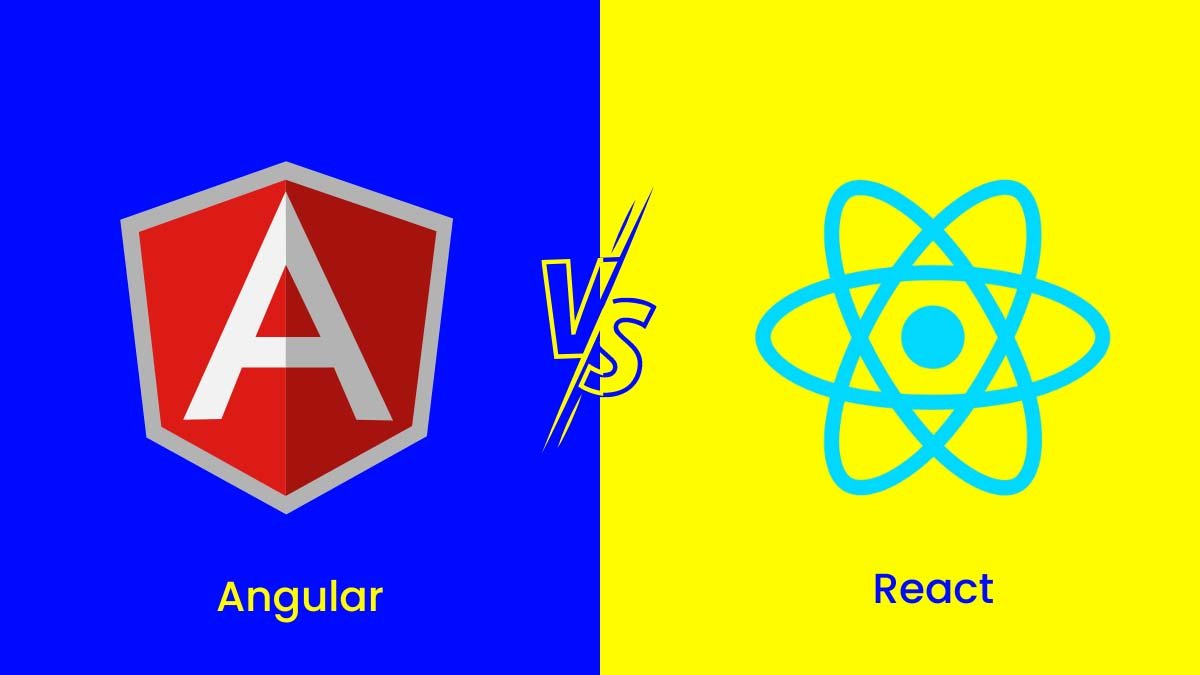In the realm of modern web development, two titans stand tall: Angular and React. Angular, backed by Google, and React, nurtured by Facebook, are among the most prominent and influential front-end frameworks driving the digital landscape.
The significance of choosing the appropriate framework for a project cannot be overstated. The framework serves as the foundation upon which the application is built. Its selection profoundly influences the development process, scalability, maintainability, and overall success of the project.
Each framework has strengths and unique characteristics that cater to different project requirements, development philosophies, and team preferences. The decision between Angular and React hinges on various factors, including project complexity, scalability needs, team expertise, and long-term maintenance considerations.
Understanding Angular and React
Angular, originally developed by Google, made its debut in 2010 with AngularJS. It introduced a new paradigm in front-end development by embracing declarative programming and bidirectional data binding. However, the landscape evolved, leading to the birth of Angular 2+ in 2016, a complete rewrite emphasizing modularity, component-based architecture, and a switch to TypeScript.
React, born out of Facebook’s necessity for a scalable and efficient front-end library, emerged in 2013. Its foundation lies in the concept of the Virtual DOM, enabling optimized UI rendering by selectively updating only the components that have changed. React’s simplicity and focus on reusable components quickly attracted developers and led to its widespread adoption.
Core Concepts and Philosophies
Angular development services revolves around a structured architecture based on modules, components, services, and directives. It emphasizes the use of TypeScript, enabling strong typing and enhanced tooling. Its philosophy centers on “batteries-included,” offering a comprehensive suite of tools and features out of the box to streamline development and maintainability.
React’s primary concept centers on components. It embraces a more flexible and lightweight approach by using JSX, which mixes HTML with JavaScript. The Virtual DOM lies at the heart of React, enabling efficient rendering by minimizing DOM manipulation. React’s philosophy focuses on a more minimalist approach, encouraging the use of external libraries for additional functionalities.
Key Features and Advantages of Angular
- Two-Way Data Binding: Enables automatic synchronization between model and view, reducing boilerplate code.
- Modular Development: Facilitates building large applications by breaking them into manageable modules.
- Dependency Injection: Promotes modularity and testability by managing dependencies.
- CLI and Tooling: Offers a robust CLI for scaffolding projects, generating components, and optimizing performance.
- Full-fledged Ecosystem: Provides solutions for routing, forms, HTTP client, and more within its ecosystem.
Advantages of Angular:
- Comprehensive Solution: Offers an all-inclusive framework for building robust applications.
- Strongly Typed: TypeScript integration ensures enhanced tooling and type safety.
- Official Support: Backed by Google, ensuring continuous updates and long-term support.
Key Features and Advantages of React
- Virtual DOM: Optimizes rendering by updating only necessary components, enhancing performance.
- JSX: Simplifies component creation by blending HTML-like syntax with JavaScript.
- Component-Based Architecture: Encourages reusability and maintainability through modular components.
- Unidirectional Data Flow: Enhances predictability and debuggability by enforcing data flow in one direction.
Advantages of React:
- Flexibility and Simplicity: Allows integration with other libraries, offering flexibility in project setup.
- Vibrant Ecosystem: Benefits from a vast community and an extensive array of third-party libraries and tools.
- Performance: Optimized rendering through the Virtual DOM ensures efficient UI updates.
Architecture and Component-based Structure
Angular’s architecture is built around modules, which encapsulate different features of an application. Within modules, components act as the building blocks, representing specific parts of the user interface. Components consist of templates (HTML views) and classes (handling the logic).
Angular’s strength lies in its robust data binding mechanisms. It offers two-way data binding, enabling automatic synchronization between the model and the view, reducing manual manipulation. Dependency Injection (DI) in Angular facilitates the development of highly testable and maintainable applications by managing component dependencies.
React’s architecture revolves around components, which are reusable and independent pieces of UI. JSX, a syntax extension for JavaScript, enables the blending of HTML-like code within JavaScript. Components in React encapsulate their own logic and rendering, promoting reusability and maintainability.
The Virtual DOM is at the core of React’s architecture. It acts as a lightweight copy of the actual DOM, allowing React to perform efficient updates by comparing the Virtual DOM with the real DOM and selectively updating only the necessary components. This minimizes expensive DOM manipulation operations and significantly enhances performance, especially in complex applications with frequent updates.
Performance and Optimization
Angular employs various optimization techniques to enhance performance. It utilizes Ahead-of-Time (AOT) compilation, where the code is compiled before deployment, reducing the bundle size and improving load times. Angular’s Change Detection mechanism enables efficient updates by tracking changes in the component tree.
For large-scale applications, Angular’s modular architecture and hierarchical dependency injection system prove advantageous. Lazy loading allows loading modules on demand, reducing initial load times. Tree-shaking capabilities further optimize bundle sizes by eliminating unused code during the build process.
React’s Virtual DOM plays a pivotal role in performance optimization. It efficiently updates the DOM by only rendering components that have changed, minimizing costly DOM manipulations. Additionally, React introduces the concept of reconciliation, where it intelligently determines the most efficient way to update the DOM.
React’s component-based structure inherently supports scalability. By breaking down the UI into reusable components, React promotes code reusability and maintainability, which indirectly contributes to performance improvements. The Virtual DOM’s ability to batch updates and perform diffing ensures smoother rendering, even in complex applications.
Angular
AOT Compilation: Reduces bundle size and enhances initial load times.
Change Detection Optimization: Efficiently updates the DOM by tracking component changes.
Modular Architecture for Large Apps: Supports scalability and lazy loading for better performance.
React
Virtual DOM and Reconciliation: Optimizes rendering by selectively updating the DOM.
Component-Based Structure: Promotes scalability and maintains performance in complex applications.
Efficient Updates: Batch updates and intelligent diffing enhance overall rendering performance.
Use Cases and Industry Adoption
Angular shines in projects that demand a comprehensive framework with built-in solutions for enterprise-level applications. Use cases include:
- Enterprise Applications: Complex dashboards, CRM systems, and enterprise resource planning (ERP) solutions benefit from Angular’s structure, strong architecture, and robust tooling.
- Single-Page Applications (SPAs): Angular’s routing, dependency injection, and comprehensive ecosystem make it ideal for building SPAs requiring complex features and scalability.
React excels in projects that emphasize flexibility, scalability, and a component-based approach. Use cases include:
- Dynamic Web Applications: React’s component-based architecture is well-suited for applications requiring frequent updates and real-time data, such as social media platforms and interactive web apps.
- Mobile App Development: React Native, a framework based on React, is used to build cross-platform mobile applications efficiently.
Prominent Companies Using Angular
Google: Utilizes Angular for various internal and external applications, including the Google
Cloud Platform.
PayPal: Employs Angular in its platform for its robustness in handling complex financial transactions.
UPS: Utilizes Angular for its shipping and logistics management applications.
Prominent Companies Using React
Facebook: Implements React across various products, including the main Facebook platform and Instagram.
Netflix: Uses React for its user interface to deliver a seamless and interactive streaming experience.
Airbnb: Adopts React for its website, benefiting from its performance and flexibility.




